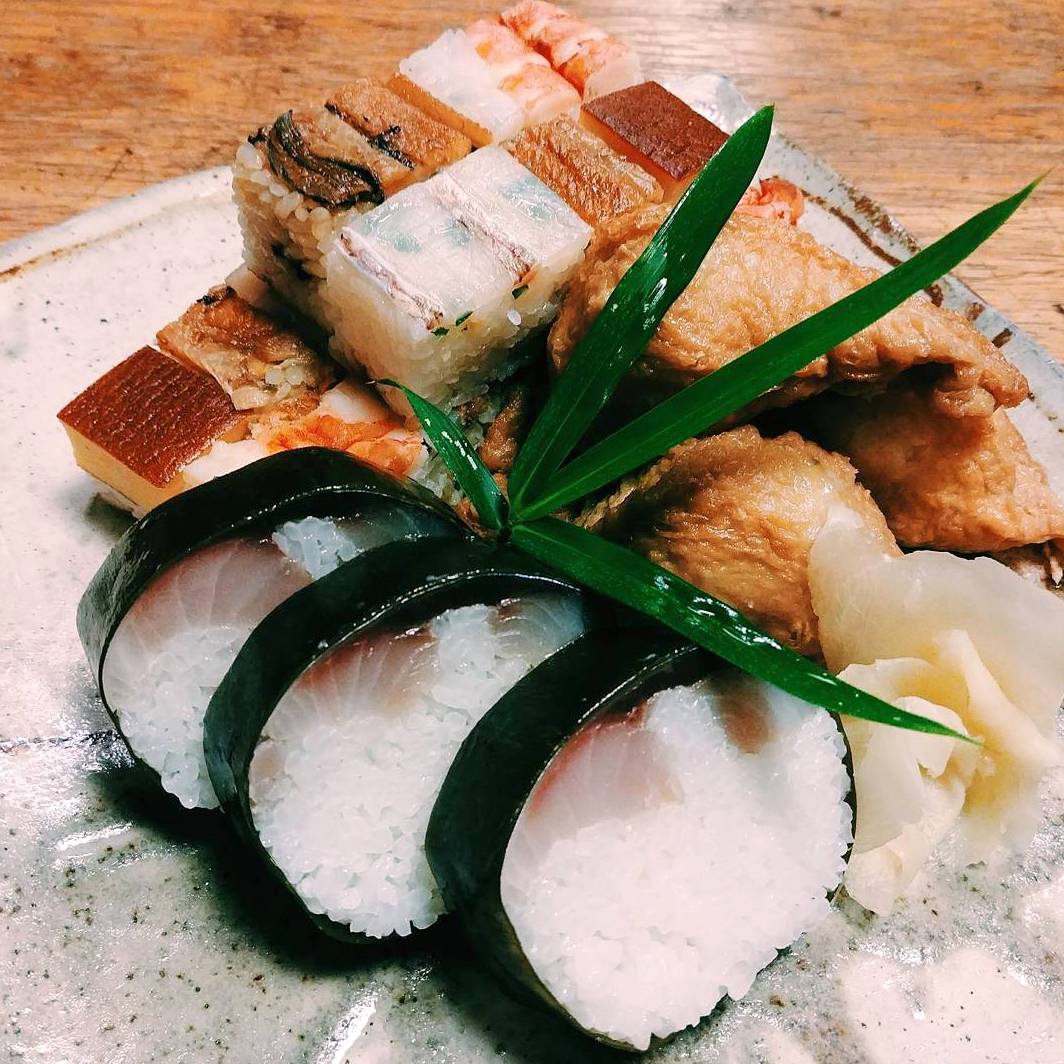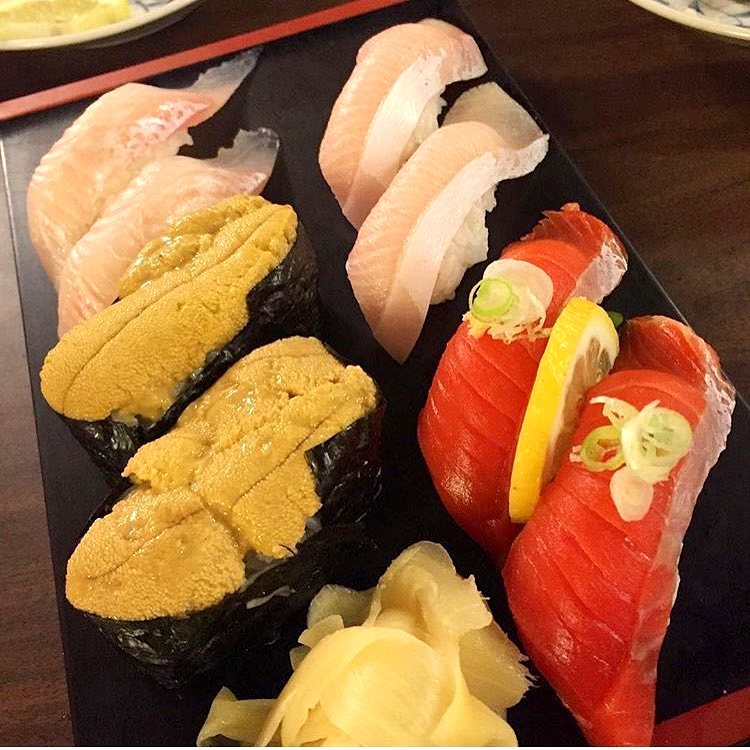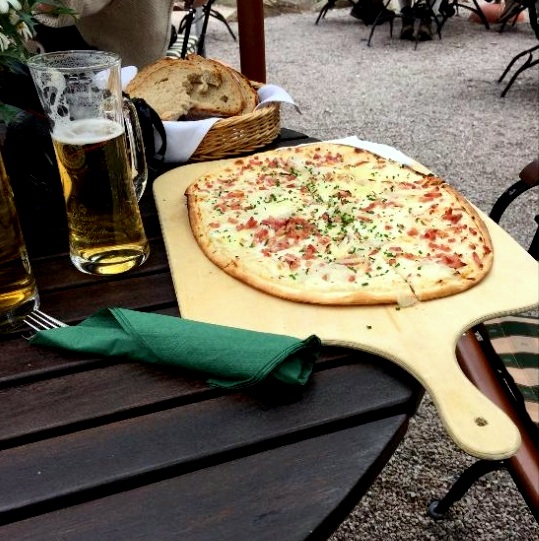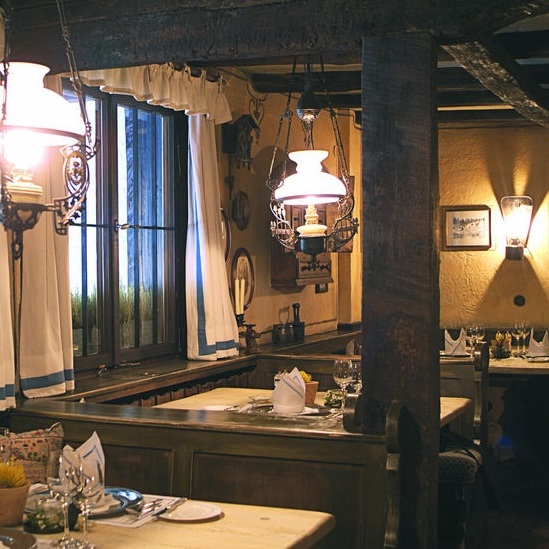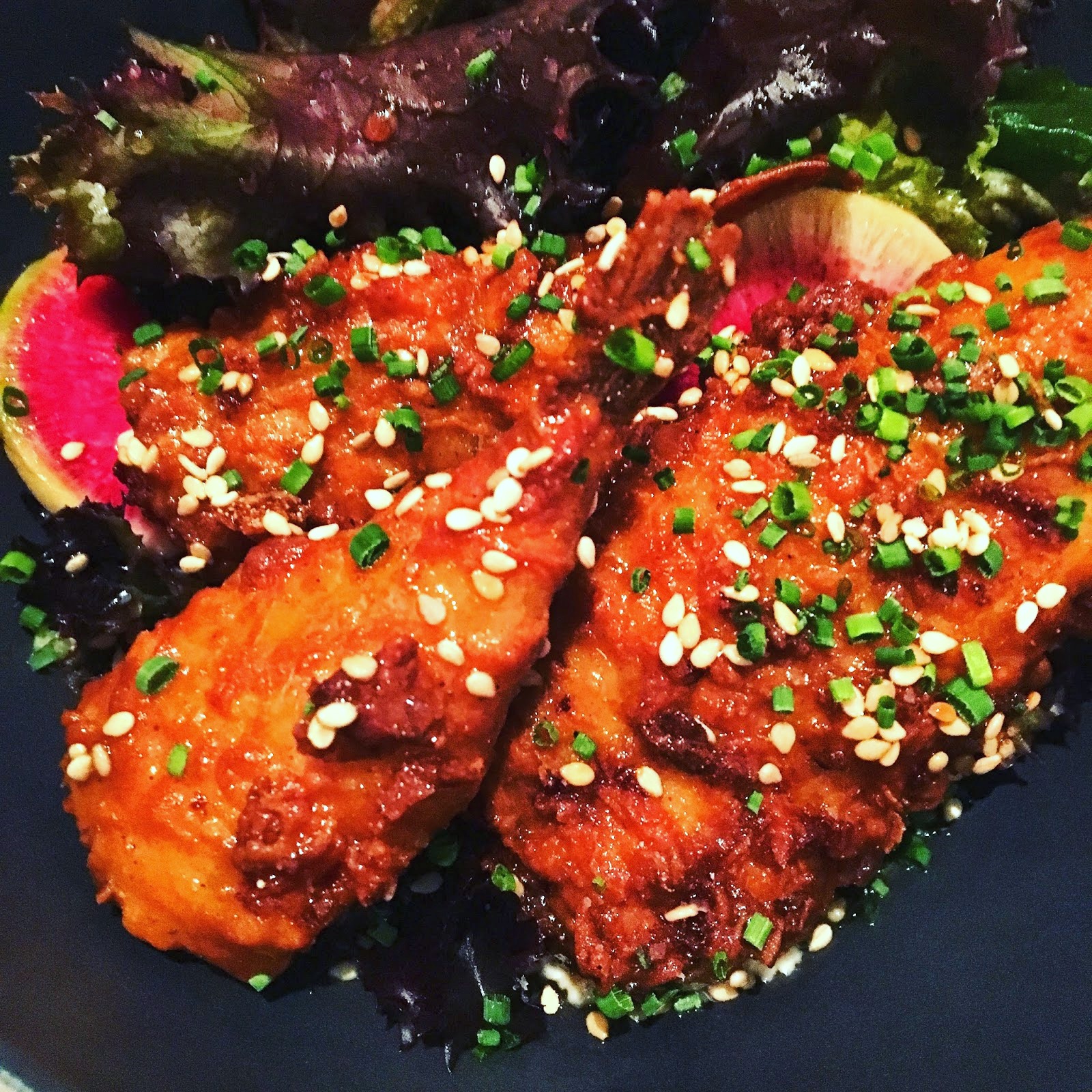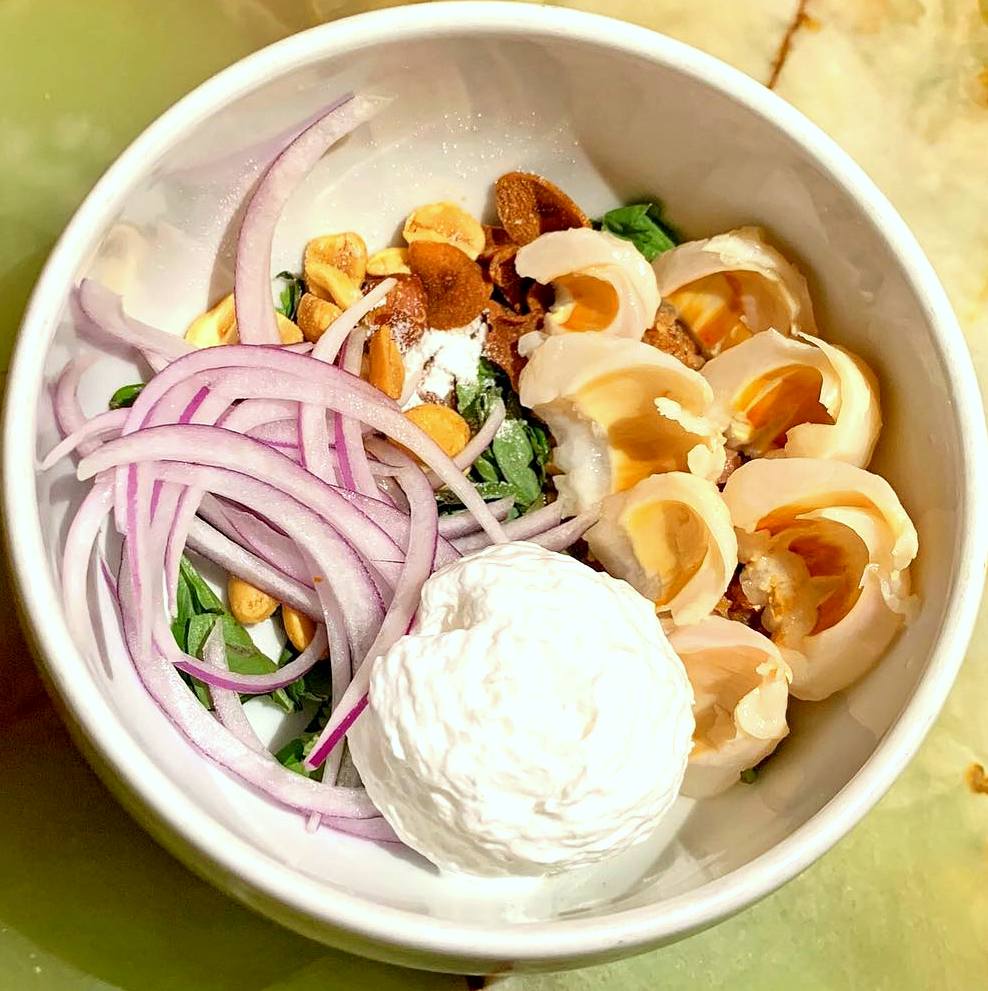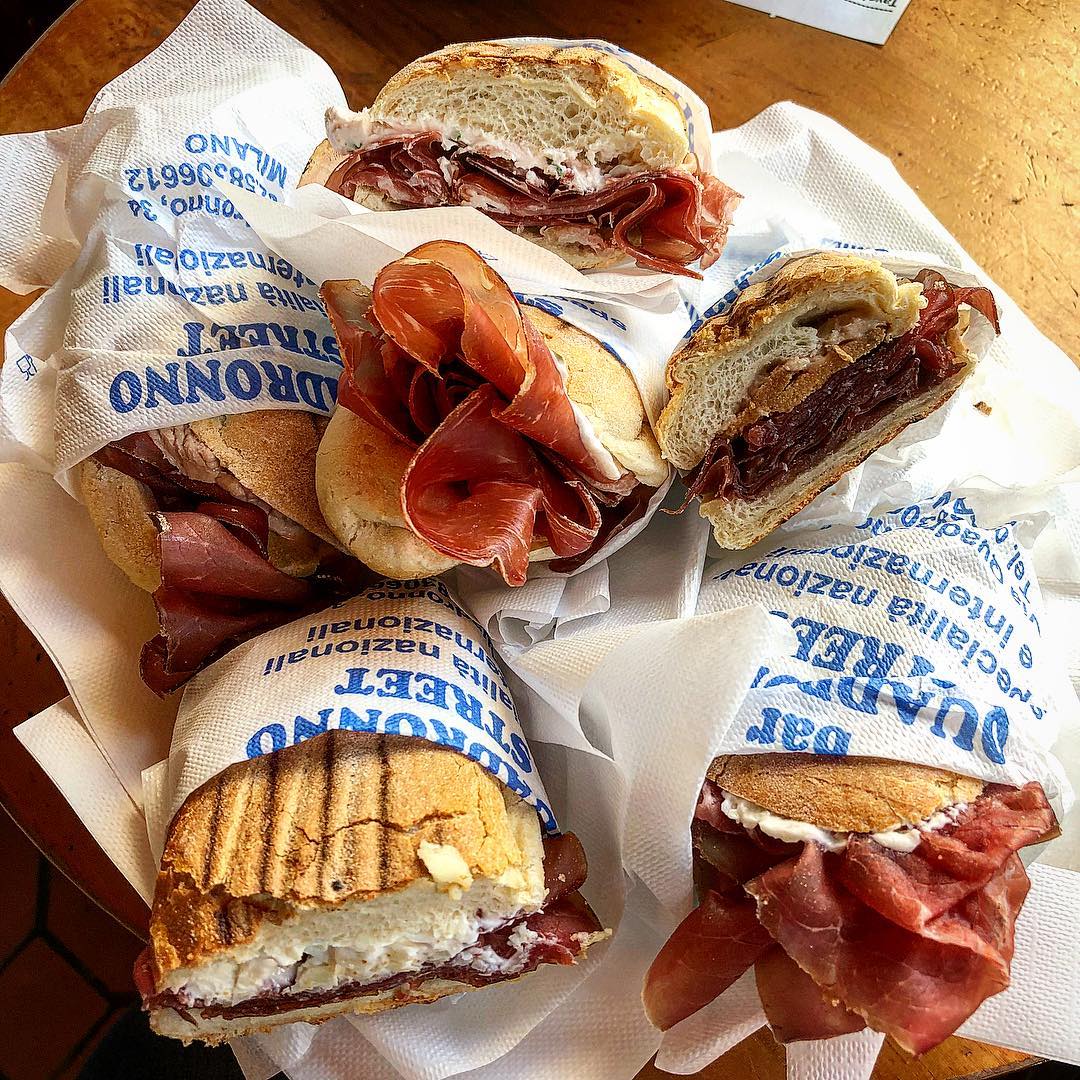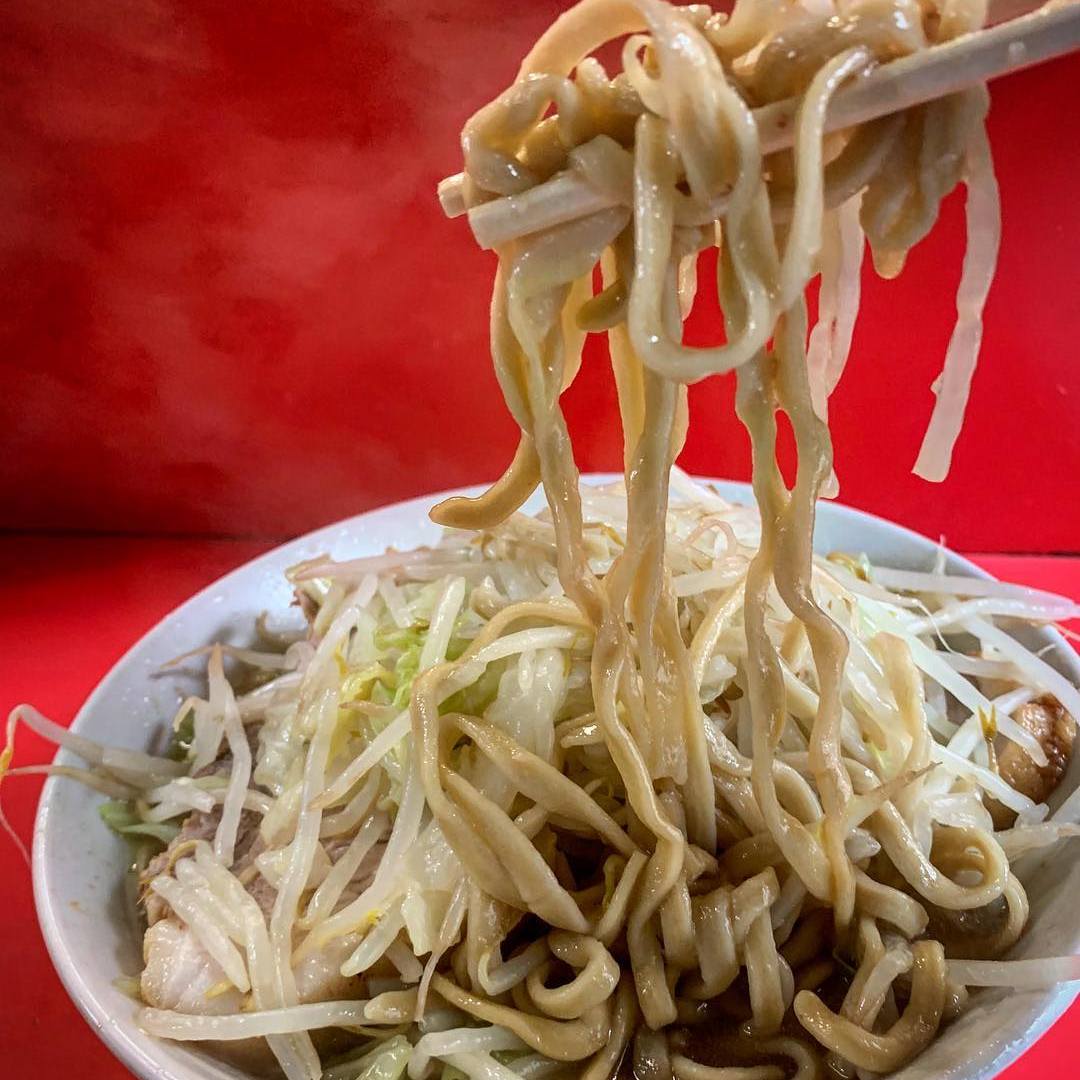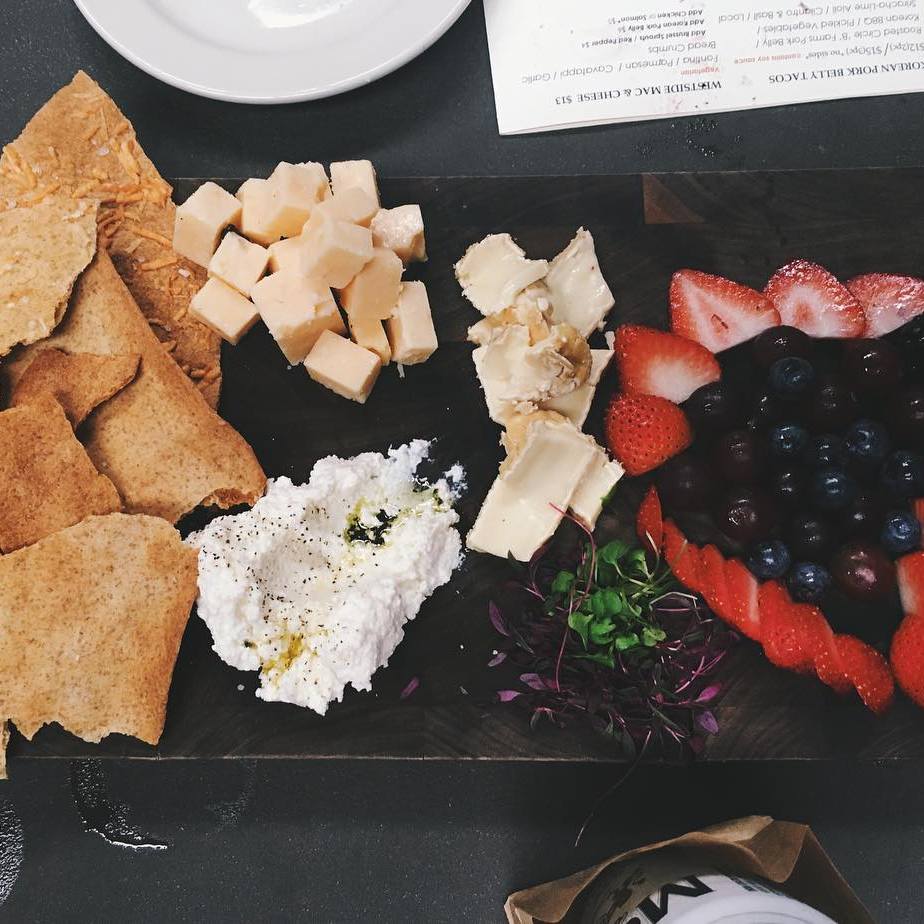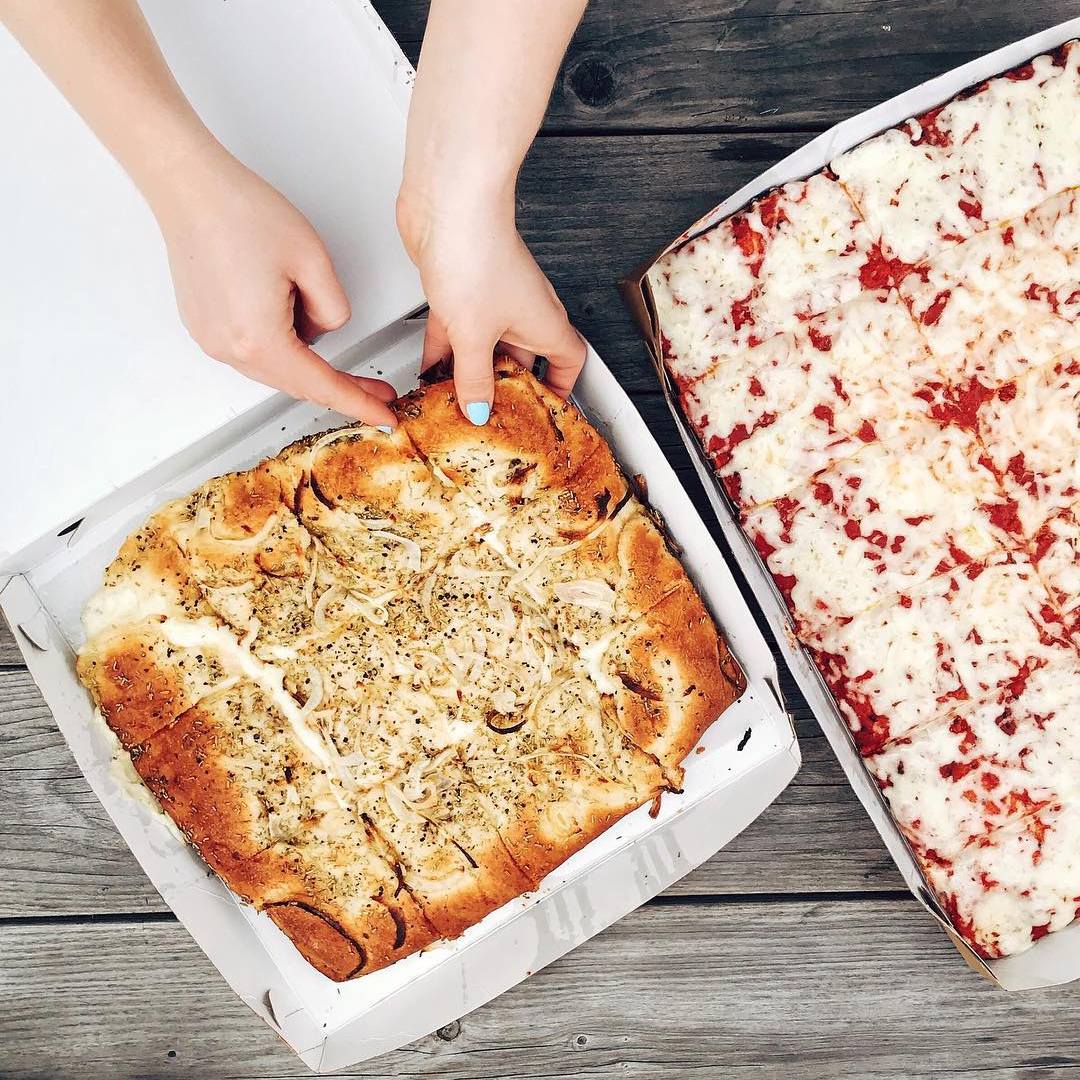With over 100 years of experience, Izuju Sushi is renowned for Kyoto-style sushi. Sitting on prime real estate in Kyoto’s Gion district -- across from the Yasaka Shrine gates -- Izuju has been on a roll since World War II. Bright red entrance curtains reveal a century-old interior decked in wooden Japanese panels and furniture, traditional paper walls and sepia photos honoring past chefs and family members. Diners pack a handful of tables to enjoy Izuju’s Kyozushi (Kyoto’s sweet style of sushi). Best eaten without soy sauce, the condiment is not offered on each table but will be provided if you ask. Restaurant staff says soy sauce overpowers the taste of the sushi’s delicate sweetness, specifically the rice. Fans recommend ordering a sharing plate like the saba-zushi (chub mackerel and kelp sushi), which includes many items from the menu. Chub mackerel is not a delicate-tasting fish, but the kelp wrapping and sweetened rice take some of the fishy kick out. The inari-zushi, sweet rice wrapped in a tofu pouch, is delicious. The selection of hako (boxed) sushi — seafood or vegetables pressed into sweetened rice with wooden frames — includes sea bream and shimeji mushrooms.
If the lines are too long, consider takeout. Izuju is worth discovering.
Maneki is impressive on paper: well-over a century old, it’s seen celebrated sushi chefs start their careers and even employed a future Japanese prime minister in the dish pit. But it’s even better in person, when you can taste the food: huge slabs of fresh fish comes as nigiri, draped over the rice like a royal cape; marinated black cod, sticky with flavour, flakes at the sight of a fork; and both are complemented with the gentle sour of elegant pickles. A reservation is a requisite, especially for those hoping for one of the coveted tatami rooms, but, should you show up unannounced, check for a spot at the bar where, if the timing is good, an octogenarian known as “Mom” will serve your snacks and sake.
Sattelei is in an old hiking hut set in the forest, a short walk from the Bareiss hotel, who own it. The setting, surrounded by pine trees, is magical. Here waitresses in traditional costume serve steins of beer and hearty local dishes. We enjoyed a very delicate tarte flambee (a kind of local flatbread or pizza) and a much more rustic Swabian pork dish with mustard and excellent sauerkraut. To finish you can try apple strudel or Black Forest gateau.
Baurenstube is a cosy little dining room in the same wooden building as its 3 Michelin star sister Schwarzwaldstube. It serves rustic local dishes, as its name suggests (Bauren is “peasant”). For example, you might try excellent lentil stew with bacon and Frankfurter sausage, which was rich and comforting. You could finish with their take on Black Forest gateau, a lovely concoction of cherries and chocolate.
Sugar toads, a tiny species of nonpoisonous puffer fish with a sweet, mild flavor are abundant in the Chesapeake Bay region where they are eaten as a delicacy. At The Dabney, chef/owner Jeremiah Langhorne treats sugar toads like Buffalo wings and the result is a legendary bar snack. Dunked in a buttermilk marinade spiked with hot sauce and salt, the fish are dredged in seasoned flour, dunked and dredged again. Deep-fried for a few minutes, they are tossed in a glaze of local honey, house-made hot sauce and benne seeds (similar to sesame seeds). Served with a buttermilk dressing infused with a Pecorino-style cheese from Pennsylvania, mayonnaise, chopped parsley, chervil, tarragon and chive, the fish arrive with a small salad and sprinkled with more benne seeds and chives.
Pro tip: If you order sugar toads, eat them with your hands, Langhorne says. “I think that’s the best way to eat a lot of things.”
Read the blog post: https://tinyurl.com/yypv8q7f
Chef Aaron Silverman helms Rose's Luxury, recently ranked the No. 1 new restaurant in America by “Bon Appetit” magazine. Customers often wait hours for a taste of Silverman’s treats, including his Pork Lychee Salad. Served in an appetizer portion, the intense and spicy dish blends sautéed sausage and garlic with fresh basil, cilantro and mint leaves, roasted peanuts, shichimi togarashi (an Asian spice mix), lychees, thinly sliced red onion, lime juice and a flourish of coconut-chile sauce.
The invention of the gourmet panini can be traced to Bar Quadronno, one of the oldest sandwich bars in Milan. According to legend, in 1964 a barman named Faravelli decided to elevate the simple michetta of salami, ham and cheese by adding sauces and culinary delicacies. His made-to-order panino imbottito (stuffed panino) creations topped with cheeses, truffles and high quality cured meats continue to attract fans today.
Ramen Jiro opened in 1968 near Keio University. Fifty years later, hungry students and fans still brave the queues and time-worn interior for manly portions of Ramen Jiro. The faithful return because the shop kick-started the Ramen Jiro trend – and all of Tokyo’s other 30-plus Ramen Jiros are descended from it in some way. Thick noodles, chunks of fatty pork, a mound of cabbage and bean sprouts are enhanced with garlic and karame, a special soy sauce-based seasoning, to create the classic dish. The bread flour noodles are coarser than normal ramen, in diameter and uniformity, and the pork stock is fatty but lighter than a Fukuoka-style tonkotsu broth. At the original shop, with its red Formica counter, a row of bar stools and antique meal ticket vending machine, Ramen Jiro creator Takumi Yamada cues up piles of ingredients and trains apprentices, who go on to open branches around greater Tokyo.
This award-winning farm in Weston, Missouri, produces 100 percent grass-fed lamb and sheep and some of the finest artisanal sheep’s milk cheeses and yoghurts on the market. Tours of the 150 acres of green pastures and meandering streams are rare, but every summer/fall for the past nine years, owner Sarah Hoffmann and Jacqueline Smith have opened their organic, community-based farm to a series of Farm Table Dinners. These one-of-a-kinds, multi-course meals paired with unique beverages highlight the season’s bounty and the farm’s Missouri-grown products, like their whole lambs and popular cheeses, as well as the creative talents of Kansas City’s top chefs. Green Dirt Farm even hosted roaming epicure Anthony Bourdain during the KC episode of his TV show “No Reservations.” Guests sample hors-d'oeuvres and seasonal cocktails before gathering around a long harvest table. As the meal progresses, the chef discusses the ingredients used, where they came from, and what inspired each dish. Tickets to the cheese-driven culinary events have become a hot commodity, usually selling out within hours. If you want to attend, act quickly. This year’s Farm Table Dinners are sold out, but log on next spring for the announcement of 2019 dinners, or email revor@greendirtfarm.com.
The farm’s adjacent creamery showcases its artisanal cheeses, customizable meat and cheese plates, sandwiches, wine and homemade ice cream. Charcuterie includes dried goat salami, and frozen lamb is available to take home. The small grocery also stocks honey, crackers, jams and more, perfect to enjoy a picnic on the outside patio area while you take in the open pastures, rustic barn and bucolic setting.
There are a dozen pizzerias in Old Forge with a unique style of pizza that was created by Nonna Ghigiarelli, who made it for regulars of her family bar back in 1926. While Elio G’s (G for Ghigiarelli) is thriving, the original location next door called Ghigiarelli where the pizza was invented is shuttered due to a Hollywood-style murder mystery where the owner mysteriously disappeared leaving a blood-splattered trail from his restaurant to an abandoned car. Make Elio G's the 1st stop on your pizza tour of Old Forge.


